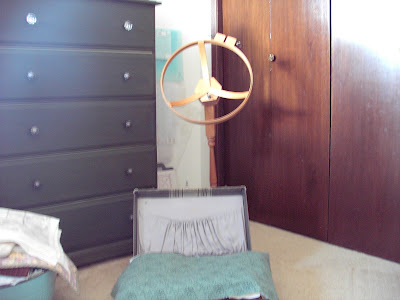I had a really good idea at a Demo last year. I can't remember what the Demo itself was about, but I was talking about using fusible interfacing to stabilize fabrics that were too drapey for traditional pieceing. ("Drapey" is not likely the proper adjective but I like it and I suspect you will know exactly what I mean!)
I remember thinking "Why couldn't you do the same thing if there was a fabric you wanted for a border but you wanted to cut it on the bias?" We quilters all know what would happen if we cut a bias border (not binding, border) and sewed to our quilt tops! But why not fuse a very lightweight interfacing to the back of the fabric prior to cutting the bias strips? As long as the borders aren't too long that should make them stable enough?
I found the perfect fabric to test my theory - a beautiful festive plaid by Nancy Halvorsen of Art to Heart which I liked best on the bias. In addition to my half metre of fabric I purchased a half metre of lightweight fusible interfacing.
I decided to begin with a small project - a Christmas ornament to be precise. I needed one more sample for an upcoming ornament class and this fabric was inspiring me in all sorts of directions. I fused the interfacing to the fabric, determined how wide the borders should be and made a few cuts. It was easy to cut through but when I lifted the first strip it started to curl slightly on the sides, as all bias-cut strips do. Uh-oh!
I gently tugged on each end and there was as much give with the interfacing as there was without. Then it hit me. Like a rock. I had used a woven interfacing and should have used one that wasn't. I had some so I fused it to a different piece of fabric, cut a strip and was pleased to see my theory was correct - the right interfacing made all the difference.
And here is the result:

My closeups still need a lot of work but you get the idea, especiall if you click on the photo and look at the enlarged version.
Now I just have to figure out what to do with my half meter that is fused to the wrong interfacing!













